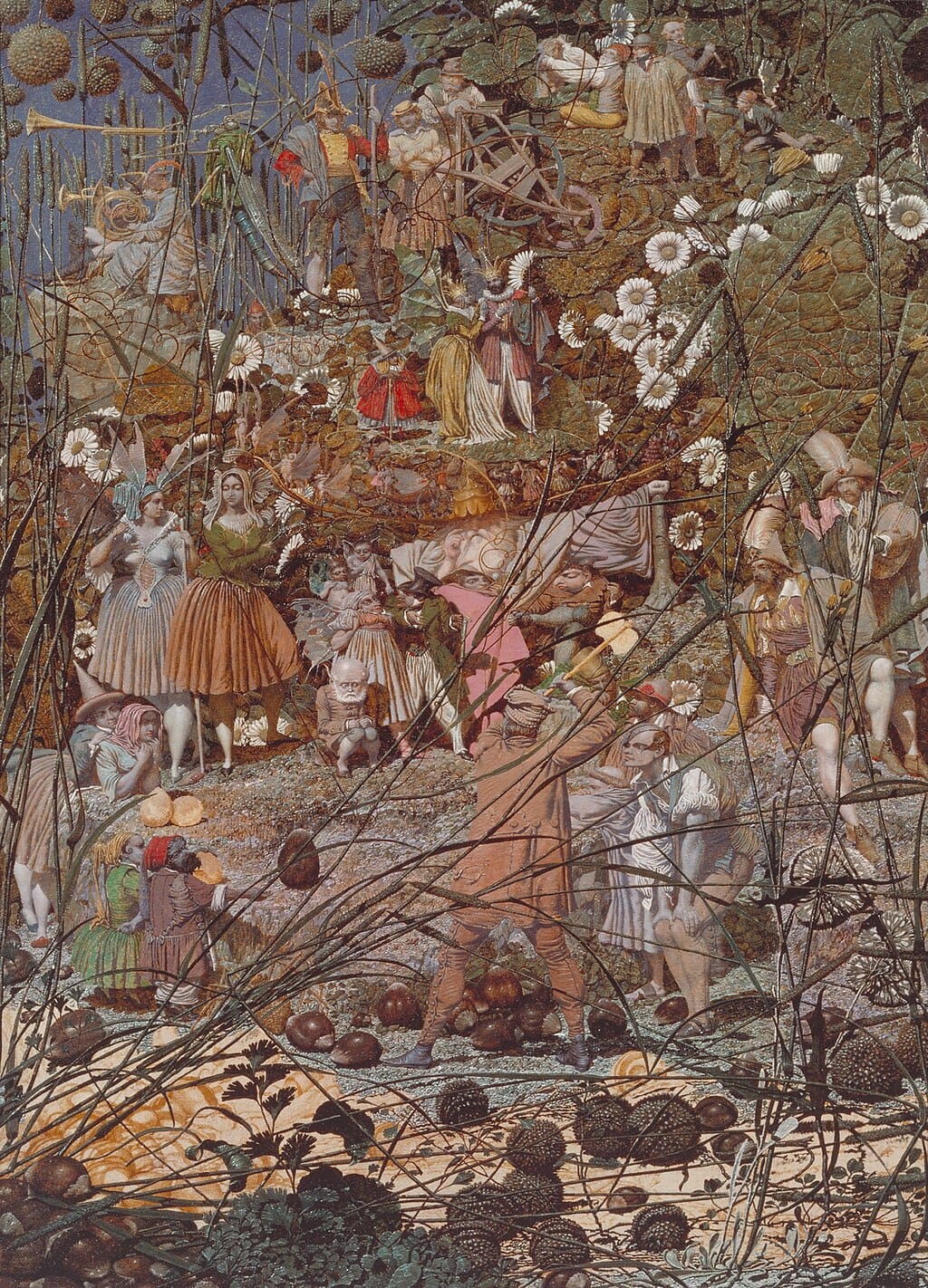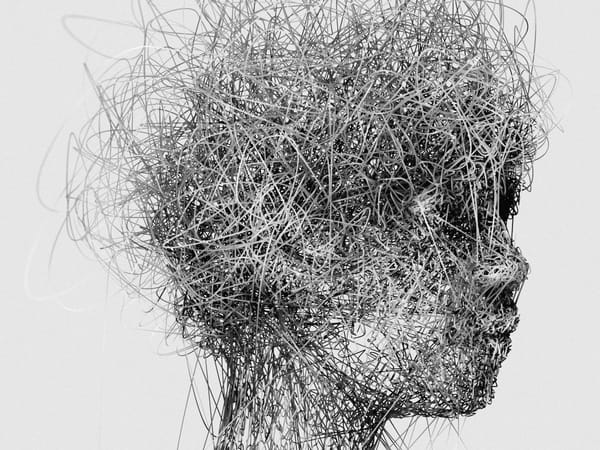The Fairy Feller’s Master-Stroke – Richard Dadd’s Asylum Madness
The Fairy Feller’s Master-Stroke by Richard Dadd, painted in an asylum over nine years, is a haunting vision where beauty and madness meet in stillness.

Painted behind asylum walls, The Fairy Feller’s Master-Stroke still holds its breath.
Freddie Mercury stood in the Tate Gallery, his eyes fixed on one of the strangest works he had ever seen. A small canvas, yet inside it hundreds of figures: fairies, strange warriors, men and women all frozen in a single, tense, eternal moment. The painting was called The Fairy Feller’s Master-Stroke.
Mercury was inspired. He returned home and wrote a song that carries the same name. Its lyrics are filled with mysterious figures and surreal images,
“Fairy dandy tickling the fancy of his lady friend, the jellyfish…”
Like the painting, the song remains unfinished. It does not explain, it does not lead anywhere, it does not resolve. It circles, waits, invites. As if the work and the song together were asking someone to step closer, to understand what others never could.
But The Fairy Feller’s Master-Stroke is not only the source of Queen’s inspiration. It is also the work of a man whose life took a dark turn, and from that darkness something shocking emerged.
The Artist Who Killed the Devil
In 1843 London was shaken. A young artist named Richard Dadd, known as a talented and promising painter of the Victorian era, committed an unthinkable act. He lured his father on a trip to the countryside of Kent, and there he stabbed him to death.
When he was arrested, Dadd said he had acted under divine command. He believed his father was not a man but a demon who had to be destroyed. His mind had broken a year earlier during a journey to Egypt, where he began to see signs, hear voices and believe that invisible forces directed his actions.
He was declared insane and confined to Bethlem Hospital, the infamous Bedlam. There, in isolation that resembled a prison, his art did not fade. It deepened. It grew stranger. It took on a form that even now, when looked at, seems to look back.
The Fairy Feller’s Master-Stroke, A Painting That Looks Back
A small canvas, yet a whole world inside it. Dadd painted The Fairy Feller’s Master-Stroke over nearly nine years within the asylums of Bedlam and Broadmoor. He filled it with dozens of figures, fairies, warriors, women and childlike beings, all caught in mid-motion, frozen in eternity.
Every detail is painted with microscopic precision. The figures are so dense and layered that the viewer can lose themselves among them, as if trying to decipher a code that was never meant to be understood.
In the center stands a man lifting an axe. He is about to strike, but the blow never falls. The moment is suspended, forever incomplete. The viewer waits for movement that never comes, and the waiting itself becomes heavy.
Dadd wrote a companion text for the painting, Elimination of a Picture & its Subject, an explanation meant to reveal its meaning. But the text is full of mythological references, strange names and senseless turns. It explains nothing. It only deepens the mystery.
Where, then, did the painting truly come from?
Painting or Portal
Richard Dadd’s mind had broken long before the painting was complete. He believed he served invisible powers, not as an artist but as a vessel, a hand moved by other wills. He said the figures spoke to him, that he did not create them, only revealed what already existed.
Looking at The Fairy Feller’s Master-Stroke one begins to understand what he meant. Each figure seems to wait for something, and the viewer is trapped in the same waiting. The strike never comes, but its shadow falls across the painting and into the viewer’s mind.
When Freddie Mercury stood in the Tate Gallery, perhaps he saw something in the painting that he could not put into words. He wrote a song where the words feel from another world, filled with figures, images and names that follow one another without explanation. The song never reaches a climax, just as the painting never strikes.
Were both the painting and the song only channels for their creators’ inner chaos, or do they hide a secret never meant to be understood, or one meant only for the few who can see it?
Perhaps The Fairy Feller’s Master-Stroke is not merely a masterpiece, but a portal. A portal that does not lead outward, but inward, into the world from which Richard Dadd never returned.
Article by Mimo Warto
© ART Walkway 2025. All Rights Reserved.







